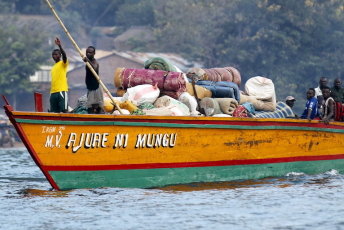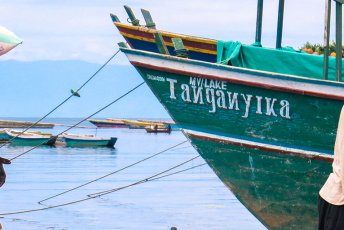The phenomenon of cattle rustling is by no means a new one: it has occurred among pastoral communities in the arid and semi-arid areas of East and the Horn of Africa for many generations. In the past, cattle rustling or raiding was integrated into cultural norms and accepted to balance community wealth, power and sometimes even integration – as cattle could be used for bride wealth.
Driven by community need, it was redistributive and reciprocal, and local means of conflict resolution would prevent the escalation of violence, particularly among pastoral communities.
More recently, these dynamics have changed. The illicit circulation of small arms and light weapons (SALW) has increased across the continent due to endemic armed conflict. This has made the once-customary practice of cattle rustling more violent, and more harmful.
Since the late 1980s and 1990s, small arms – particularly AK-47 rifles – became weapons of choice in cattle rustling. These replaced traditional and less deadly weapons. Cattle rustling has been changing in other ways, too. More recently, it has been taking on a more commercial and political character – and with this, an increasingly transnational criminality.
It is also spreading to other parts of Africa. In Nigeria, for instance, the practice was traditionally less pronounced than in East and the Horn of Africa. Recently, cattle rustling has taken on a new and concerning scale in this country. A watershed moment appears to have occurred between 2013 and 2014, when approximately 7 000 cattle were rustled from commercial livestock farms and traditional herders in northern Nigeria, prompting military intervention and political contestation. Cattle rustling can be traced to activities of the extremist Boko Haram group in this part of Nigeria and other parts of the Lake Chad Basin.
The situation is no better in South Sudan. According to the country’s Ministry of Interior, ‘it is estimated that the number of unauthorised arms has dramatically increased to over 3.2 million small arms circulating in the hands of civil population since the beginning of violence in December 2013.’ The ongoing cycle of conflict and violence has seen cattle raiding occurring in tandem with the trade in illegal small arms. Cattle are bartered for guns and bullets, and guns and bullets traded for cattle: a lethal symbiosis with catastrophic results.
For example, on 30 November 2017, at least 50 people were killed and about 60 women and children abducted in two raids by tribal militia in eastern South Sudan. Local officials said most of the victims were civilians whose homes were burned and livestock stolen by armed men from rival ethnic groups.
In early 2017, in Laikipia, Kenya, about 10 000 pastoralists armed with automatic rifles raided farms, wildlife reserves and conservancies, driving 135 000 head of cattle. A few months later, security agencies in Kenya intervened, killing hundreds of cattle in a gunfight with pastoralists.
The response of affected states has taken mainly two forms: first, the use of largely indiscriminate force, or second, incentivised disarmament initiatives. Neither has been particularly successful. The indiscriminate violence ratchets up community resentment, while the exchange of livestock for firearms and ammunition – as in South Sudan and Kenya – yields little result.
However, research has established that the ratification and implementation of global arms control initiatives such as the Arms Trade Treaty (ATT) and similar regional mechanisms are essential to addressing a wide number of organised criminal activities, including cattle rustling. Encouragingly, the policy framework for this already exists in East and the Horn of Africa.
In 2008, the countries of the East African Community (EAC) under their umbrella policing body, the Eastern Africa Police Chiefs Cooperation Organisation (EAPCCO), adopted the Protocol on the Prevention, Combating and Eradication of Cattle Rustling in Eastern Africa.
The objective of the protocol was to rally the 11 EAC member states to adopt a common policy towards the eradication of cattle rustling. Articles 6 and 7 call on state parties to harmonise legislation related to cattle rustling, and to implement livestock identification systems and records.
The protocol also encourages capacity building for police, customs, border guards, the judiciary, local leaders and other relevant agencies. Additionally, it provides a framework for combined operations, mutual assistance and cooperation in law enforcement.
However, the protocol is yet to enter into force – and until that happens, the East and the Horn of Africa will be devoid of an effective approach to combatting cattle rustling.
The impact of cattle rustling has become devastating. EAPCCO member states now have an opportunity to effectively counter this scourge, and lead efforts in an area that is rapidly affecting other African regions. But doing so would require renewed commitment to ratify and implement the protocol.
Deo Gumba, ENACT Regional organised crime observatory coordinator – East and Horn of Africa, and Nelson Alusala, Senior researcher, ENACT, ISS







